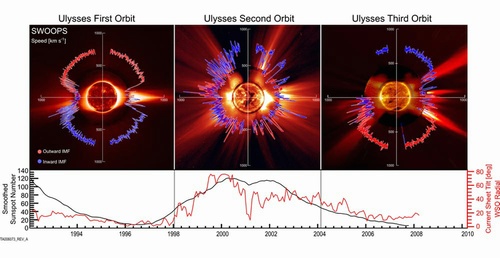Data from the Ulysses mission show that the Sun has reduced its output of solar wind to the lowest levels since we've had readings and it could reduce the natural shielding that envelops our Solar System.
The Sun's solar wind plasma is a stream of charged particles that are ejected from the upper atmosphere of the Sun. The solar wind interacts with every planetary body in our Solar System. It even defines the border between our Solar System and interstellar space.
This border, called the heliopause, is a bubble-shaped boundary surrounding our Solar System where the solar wind's strength is no longer great enough to push back the wind originating from other stars. The region around the heliopause also acts as a shield for our Solar System, warding off a significant portion of the cosmic rays outside the galaxy.

"The Sun’s 1.5 million km-per-hour solar wind inflates a protective bubble around the Solar System and can influence how things work here on Earth and even out at the boundary of our Solar System, where it meets the galaxy," said Dave McComas, Principal Investigator for the Ulysses solar wind instrument and senior Executive Director at the Southwest Research Institute in San Antonio, Texas. "Ulysses data indicate the solar wind’s global pressure is the lowest we have seen since the beginning of the space age."
"Galactic cosmic rays carry with them radiation from other parts of our galaxy," said Ed Smith, NASA's Ulysses Project Scientist from the Jet Propulsion Laboratory in California, USA. "With the solar wind at an all-time low, there is an excellent chance that the heliosphere will diminish in size and strength. If that occurs, more galactic cosmic rays will make it into the inner part of our Solar System."
Galactic cosmic rays are of great interest; cosmic rays are linked to engineering decisions for unmanned interplanetary spacecraft and exposure limits for astronauts traveling beyond low-Earth orbit.

In 2007, Ulysses executed its third scan of the solar wind and magnetic field from the Sun’s south to the north pole. When the results were compared with Ulysses observations from the previous cycle, the strength of the solar wind pressure and the radial component of the magnetic field embedded in the solar wind were found to have decreased by 20%. The field strength near the spacecraft has decreased by 36%.


